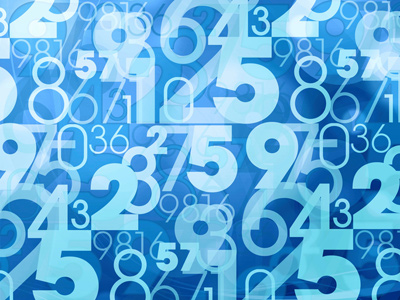
Ask the AI Tutor
Need help with Numerical Skills? Ask our AI Tutor!
AI Tutor - Lucy
Connecting with Tutor...
Please wait while we establish connection

See if you can get ten out of ten in this quiz.
Numerical Skills
GCSE Geography uses numbers to make sense of maps, graphs, and data. This quiz tests your numerical skills for real-world geographical questions.
1 .
Which of the following is NOT correct?
One hectare is equal to ten thousand square metres
5 ha = 0.05 km2
One kilometre is represented by 25 centimetres on a map drawn to a scale of 1:25,000
The summit of a 500m high hill is 0.5 km above sea level
Make sure that you revise the meaning of map scales
2 .
What is the median of these numbers: 8, 7, 5, 9, 3, 5, 6, 4, 6, 6?
8
4.8
6
5.9
When there are an even number of results, the median is the mean of the two central numbers, in this case 6 and 6. It is also referred to as the 50th percentile
3 .
What is the mean of these numbers: 8, 7, 5, 9, 3, 5, 6, 4, 6, 6?
8
4.8
6
5.9
The mean is also called the arithmetic mean or the average and is one measure of central tendency
4 .
Which of the following statements is NOT true?
You should make as many repeat measurements in the time available so that you can evaluate how accurate and reliable your results are
Taking an average of each of the results will help to make your data more accurate as it can smooth out errors
Taking a single set of results makes it hard to evaluate if your results are accurate
If you concentrate, taking only a single set of results guarantees that they will be accurate and reliable
Accuracy and reliability are not the same
5 .
A class was asked to prepare an isoline map showing the pedestrian flow around the CBD of their local town using 5 minute pedestrian counts. They split up and everyone made their observations at 1pm. Which of the following would be the most useful columns for putting the class results into a table?
Number of pedestrians, distance from centre of the CBD
Number of pedestrians, distance from centre of the CBD and time
Number of pedestrians, distance from centre of the CBD, number of businesses visited by at least one pedestrian
Number of pedestrians and time
An isoline map is designed to present bivariate data, so only two columns are needed. The time at which each count was made was the same, so it is not necessary to record it in the table of results
6 .
On an OS map, what area would be represented by a block that measured 4 grid squares long and 3 grid squares wide?
12 km2
12 hectares
12 m2
120,000 m2
A grid square on an OS map represents one square kilometre on the ground
7 .
What is the range of these numbers: 8, 7, 5, 9, 3, 5, 6, 4, 6, 6?
8
4.8
6
5.9
The range is the difference between the largest and smallest number
8 .
Which of the following distances are equivalent?
1 km and 100 m
5 km and 5000 m
1.5 km and 1500 cm
18.6 km and 186,000 m
You need to be able to correctly convert from one SI unit to another
9 .
The GDP of Bangladesh in 2014 was 173 billion US dollars. In 2015, this had increased to 195 billion US dollars. What is the approximate percentage increase?
10%
13%
16%
19%
You can forget about the units for the calculation as you are just working out a percentage. You don't need to write all of the zeros to represent the billion as they are the units. The increase in GDP is 22 (195 - 173). The original value is 173. The percentage increase is therefore 22 divided by 173 multiplied by 100 to get the percentage. This works out at 12.7 so the closest answer is 13%
10 .
What is the mode of these numbers: 8, 7, 5, 9, 3, 5, 6, 4, 6, 6?
8
4.8
6
5.9
The mode (or modal value) is simply the number that appears in the list most frequently
**Unlimited Quizzes Await You! 🚀**
Hey there, quiz champ! 🌟 You've already tackled today's free questions.
Ready for more?
Ready for more?
🔓 Unlock UNLIMITED Quizzes and challenge yourself every day. But that's
not all...
not all...
🔥 As a Subscriber you can join our thrilling "Daily Streak" against other
quizzers. Try to win a coveted spot on our Hall of Fame Page.
quizzers. Try to win a coveted spot on our Hall of Fame Page.
Don't miss out! Join us now and keep the fun rolling. 🎉
**Unlimited Quizzes Await You! 🚀**
Hey there, quiz champ! 🌟 You've already tackled today's free questions. Ready for more?
🔓 Unlock UNLIMITED Quizzes and challenge yourself every day. But that's not all...
🔥 As a Subscriber you can join our thrilling "Daily Streak" against other quizzers. Try to win a coveted spot on our Hall of Fame Page.
Don't miss out! Join us now and keep the fun rolling. 🎉






